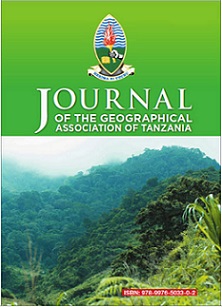Understanding Spatial Flow of Building Poles ' Opportunities and Challenges for Sustainable Livelihoods and Forest Resources: The Case of Zanzibar, Tanzania
Abstract
This paper examines the spatial flow of building poles in Zanzibar,Tanzania, its opportunities and challenges. The objective is to understand
spatial flow of building poles ' effects on sustainable livelihoods and forest
resources. It is a result of a study that took place in March 2013 in Urban
West Region, Ukongoroni and Charawe shehias. The methods used
included focus group discussions, a brief questionnaire, an in-depth
interview and direct observations. Also Arc GIS version 10.2.2 was used to
overlay GPS points of building poles ' depots over land use maps. The
findings indicated that the availability of building poles contributed to the
expansion of the Urban West built up area from 8.3km 2 in 1985 to 46.8km 2
in 2009. It also led to income poverty alleviation among building poles
distributors. However, it led to the gradual disappearance of indigenous
species as they were being replaced by exotic species such as Casuarina
equisetifolia, which were highly demanded in the construction industry in
Zanzibar. It is thus recommended that replanting or silvicultural work
involving indigenous species should be encouraged for sustainable
indigenous forests in Zanzibar.
Downloads
Published
2017-05-24
Issue
Section
Articles


